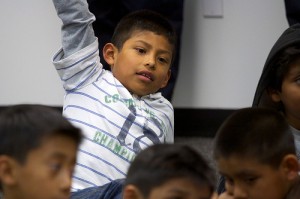In the final post of the series of interviews, Department of Education's Karen Cator discusses how the National Education Technology Plan addresses the achievement gap and how the plan squares with Race to the Top.
- How is the achievement gap addressed in the National Education Technology Plan? How can technology bring the best education for students of all races and cultures?
I believe learning technologies can be designed and developed to increase the opportunity for every student to learn. We can create a much more productive system so that every student is doing what’s much more productive for them on any given day. There’s a lot of research about learning that has to do with ensuring that content is personalized, that it takes into consideration prior experience and development of languages, for example. There are a lot of things we can do if we're able to leverage digital technologies to personalize the learning environment.
Also, there is an overwhelming need to make sure that we do fully believe that all students can learn and deserve the best possible opportunity. We’ve been focusing on that opportunity for people of all ages. There are something like 93 million under-educated adults. So if we think of building out that opportunity to learn for people of all ages, some of the tools and resources might be the same for a 33 year-old wanting to be retrained to be a medical technician, some of those tools might be the same as what they missed in high school, so they can be available to students of all ages to learn.
And we must also understand the importance of early learning. The Department of Education just funded the Ready to Learn grant, focused on taking to scale the use of media and trans-media and providing scaled opportunities for young children to develop language, a sense of story, skills of early literacy and early math. We know early learning is really important for addressing that achievement gap as well.



